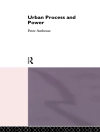This book seeks to understand the coexistence of bodily regimes and the politics that emerge from the clash between them:
* Presents a novel conceptual model for understanding the relationship between bodies and affects
* Reworks Rancière’s notions of the distribution of the sensible and the aesthetic unconscious
* Establishes a dynamic and multiple understanding of the repressive, distributive and communicative unconscious by rethinking Freudian psychoanalysis
* Utilizes a variety of empirical materials, from Hollywood movies to Freud’s case studies
* Sets its argument about politics within the context of significant social events to ensure its conceptual and empirical material is relevant to the contemporary political moment
Jadual kandungan
List of Figures vi
Series Editors’ Preface viii
Preface ix
1 Introduction: Bodies, Affects and Their Politicisation 1
2 Dislocated by Epidermal Schemas: Skin, Race and a Proper Place for the Body 27
3 The Chafing of Bodily Regimes: Skin and the Corporeal Model of the Ego 49
4 Bodies, Affects and Their Passionate Forms: Animal Phobias and the Topologies of Bodily and Psychic Space 70
5 The Worldliness of Unconscious Processes: The Repressive and Distributive Functions of the Unconscious 91
6 The Transference of Affect: The Communicative Function of the Unconscious 113
7 Crazy about Their Bodies: The Art-work of Sharon Kivland and the Politics of the Female Body 136
8 Conclusion: Bodies, Affects, Politics 158
References 179
Index 192
Mengenai Pengarang
Steve Pile teaches Geography at The Open University, UK. Publishing on issues concerning place and the politics of identity, Steve is the author of Real Cities (2005) and The Body and The City (1996), which both develop a psychoanalytic approach to geography. It is through these projects that he became interested in bodies and affects and their relationship to contemporary modernity. His many collaborative projects include Psychoanalytic Geographies (2014) edited with Paul Kingsbury, and Spaces of Spirituality (2018) edited with Nadia Bartolini and Sara Mac Kian.












